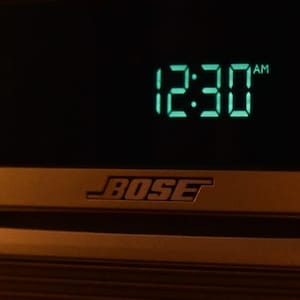behind its time: Idiom Meaning and Origin
What does ‘behind its time’ mean?
The idiom "behind its time" means that something is outdated or not keeping up with current trends or advancements.

Idiom Explorer
The idiom "it's about time" is used to express that something should have happened sooner or that someone is overdue for a certain action or event.
The idiom "in this day and age" refers to the present time or era, emphasizing its contrast with the past. It expresses the idea that things have changed significantly and highlights the modern advancements and developments that currently exist.
The idiom "high time" means that something should have happened or should be done immediately, as it is already late or long overdue.
The idiom "have seen one's day" means that something or someone used to be great or important in the past, but is no longer relevant or valuable in the present.
The idiom "go back in time" means to return to a previous period or moment in history, often used figuratively to express the desire or possibility of revisiting past events or changing past actions.
The idiom "get with the times" means to adapt to or accept new ideas, technology, or social norms.
The idiom "get late" is used to describe a situation when something is taking longer to happen, progress or finish than originally expected or anticipated.
The idiom "fall behind" means to fail to keep up with someone or something, usually in terms of progress or a schedule.
The idiom "dry behind the ears" means someone is still young or inexperienced.
The idiom "down the road" means in the future or at a later time.
Lost in History
The idiom "behind its time" suggests that something or someone is outdated or has not kept up with current practices, beliefs, or advancements. It conveys a lack of progress or failure to evolve, indicating that the subject is stuck in the past or out of touch with contemporary ideas and technologies.
During the late 18th century and early 19th century, the phrase "behind the times" was commonly used. This phrase eventually evolved into the more concise and modern variant "behind its time." The word "behind" in this context refers to being in a position that is not up to date or in line with prevailing trends or standards.
The idiom "behind its time" can be used in various contexts, such as describing outdated technologies, social attitudes, fashion choices, or individuals who resist change. It is often employed to criticize or highlight the contrast between the old and the new, emphasizing the need for progress or adaptation.
For example, when referring to a product or device as being "behind its time" in the realm of technology, it suggests that it is no longer state-of-the-art or competitive in the current market. This can be due to technological advancements rendering it obsolete or the emergence of newer and more innovative alternatives.
On a broader scale, the idiom can also be used to describe societal or cultural beliefs that have not evolved with the changing times. It suggests that certain values, norms, or traditions are no longer relevant or acceptable in contemporary society, highlighting the need for progress and adaptation to new circumstances.
While the idiom primarily conveys a negative connotation, it can also be used in a more nostalgic or sentimental manner. In such cases, it may evoke feelings of fondness or a romanticized view of the past, expressing a longing for a simpler time or a desire to preserve certain traditions or values.
The idiom "behind its time" encapsulates the idea of being outdated, out of touch, or lacking progress. It has historical roots in the late 18th and early 19th century and continues to be widely used in contemporary English. Whether applied to technology, social attitudes, or individual behavior, this idiom serves as a reminder of the importance of keeping up with the ever-changing world around us.
Example usage
1. The company's outdated technology and slow processes indicate that it is behind its time, and it needs to upgrade and modernize to remain competitive in the market.
2. The school's curriculum is still focused on traditional teaching methods and lacks integration of new technologies. As a result, it is behind its time and failing to prepare students for the demands of the digital age.
3. Despite being a historical landmark, the museum has not adopted modern techniques for interactive exhibits and educational programs. This resistance to change shows that it is behind its time and not meeting the expectations of visitors looking for a more immersive experience.
More "Outdated" idioms



